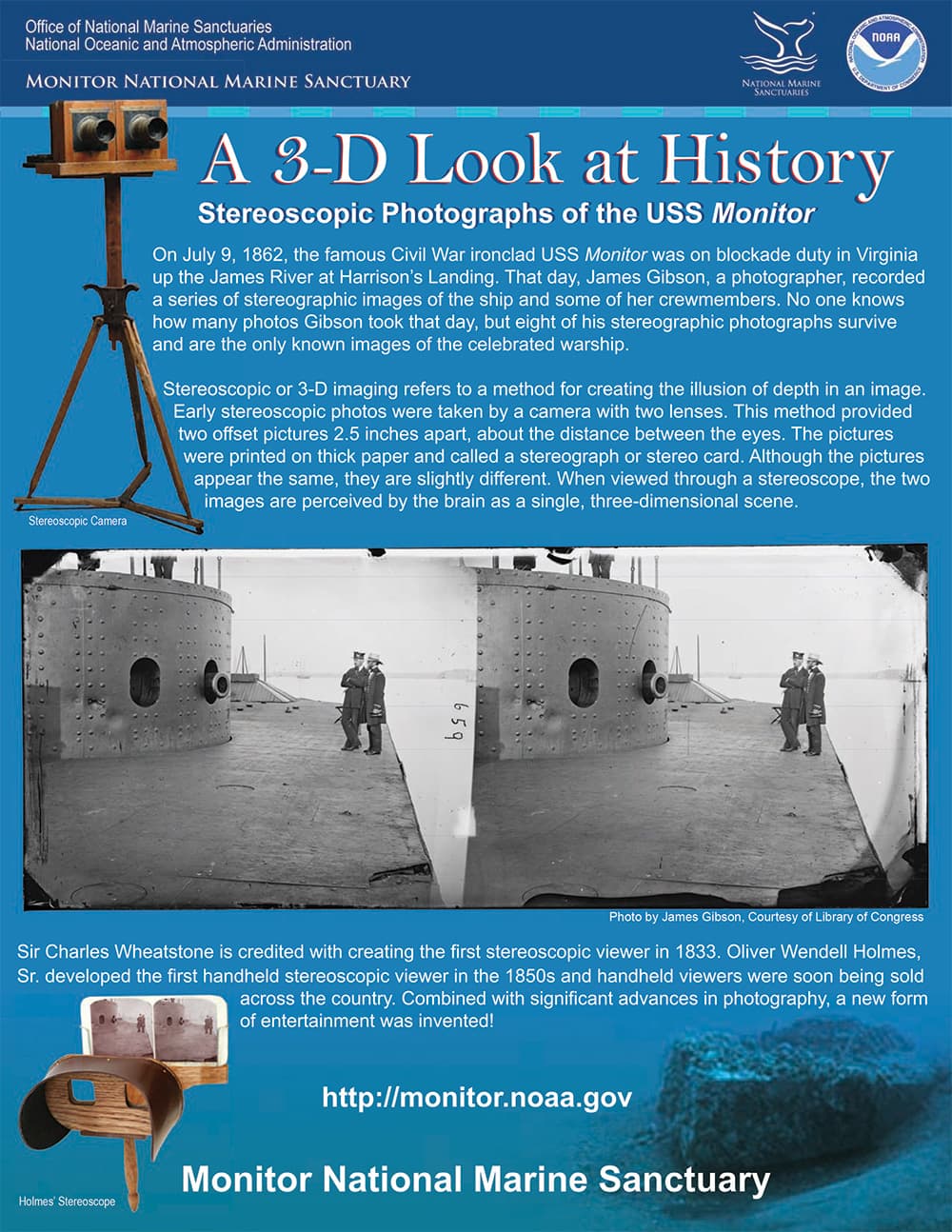For Teachers

Monitor National Marine Sanctuary offers a variety of free resources for educators. Resources include social studies activities, as well as science, technology, engineering, art, and math (STEAM) activities, lesson plans, and guides. Upon request, the sanctuary staff offers free in-school programs on a variety of topics for the K-12 audience. Free educator workshops for school staff can also be scheduled year round.
Each section below is filled with STEM activities, lesson plans, and games. Explore the Civil War and USS Monitor, World War I, World War II, Shipwrecks and STEM, Wrecks as Reefs, the Outer Banks Maritime Heritage Trail, and more.
For additional information about specific products and programs, or to request hard copies of products, please contact monitor@noaa.gov. When requesting hard copies of items, please remember to include your physical mailing address.
Civil War and the USS Monitor
USS Monitor Curriculum – Grades 4-8
Monitor National Marine Sanctuary, in partnership with The Mariners' Museum and Park, is excited to provide this guide on the USS Monitor and the lasting impact this innovative ship left on naval history. The comprehensive guide explores the tensions surrounding the Civil War, the transitions from wood to iron ships, and Monitor today. Although designed to be taught as a unit, each lesson can be used independently or lessons can be combined in multiple ways to create a curriculum tailored just for your students. Click here to download your copy of USS Monitor: Discovering and Exploring America's Most Historic Ironclad
Activities for Grades 6-12
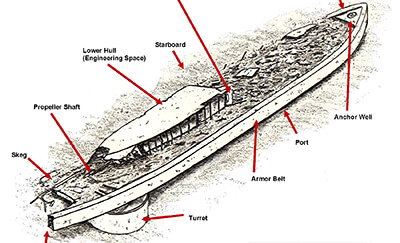
Putting the Pieces Together
Maritime archaeologists use photographic images to help them study shipwrecks. In this activity, students learn how photomosaics are created and their importance in documenting a shipwreck when they use this 1974 photomosaic image of the USS Monitor.

Sleuthing Through 1862
Students become detectives and use various clues to discover the identity of a sailor whose remains were discovered on a fictitious Civil War shipwreck..

Lights, Cameras, Action
The Battle of Hampton Roads was one of the greatest battles in naval warfare. It was the first time iron met iron. In this activity, students discover how the USS Monitor and the CSS Virginia were developed, engineered, and constructed, and learn the ultimate, long-reaching outcome of the Battle of Hampton Roads. Students will present their findings with supporting evidence in a music video created with Animoto or other media programs.

Drum Beats of the Drummer Boys
During the Civil War, boys as young as nine years of age wanted to go to war. Often these young boys enlisted as drummer boys. This activity focuses on the role of the drummer boy and the challenges he faced.

A Look Through Time
Explore how the introduction of ironclad ships affected the outcome of naval battles, a naval blockade, as well as changing naval history. Research the building and naval actions of the first ironclad ships and create a timeline of the USS Monitor and the CSS Virginia from conception to sinking. Use of LiveBinders and TimeToast is optional.
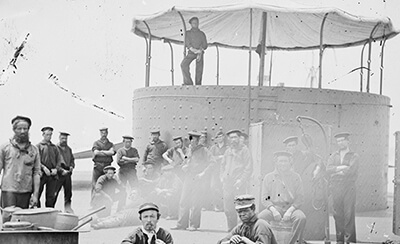
Growing the Family Tree
In 2002, the remains of two sailors were found during the excavation of the Monitor's turret. In this activity, discover how NOAA is trying to identify these remains and how forensics will play a role. Also, learn about genealogy and trace your own family tree.

When Johnny Comes Marching Home
During the Civil War, music played a huge role. Sailors, soldiers, slaves, and men, women, and children of all ages sang songs that told the story of their hardships, love of country, sweethearts, battles they fought, and more. Delve into the music of the 1860s to learn how songs helped to bind people together.
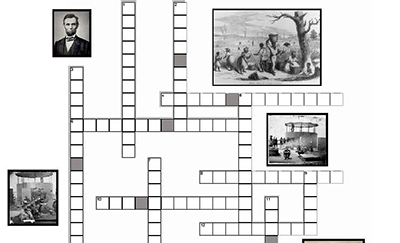
The Civil War in Review Crossword Puzzle
Students will use the knowledge they learned about the Civil War to complete the crossword puzzle.

Test Your USS Monitor Knowledge
See how many correct answers your students can get on this crossword puzzle.
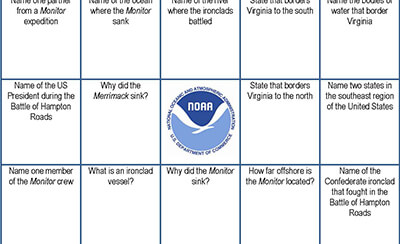
Monitor Bingo
Test your students' knowledge of the USS Monitor as they try to answer all the questions in a row or diagonal to win at this Bingo game.

Clash of Armor
A middle school social studies activity highlighting the Battle of Hampton Roads. (Courtesy of The Mariners' Museum and Park)

Mapping Monitor
An elementary and middle school activity where students map artifacts discovered on Monitor onto a shipwreck site plan using a simple grid. (See below for additional shipwreck mapping activities.)

Iron Cheesebox
A high school chemistry activity where students learn about conserving artifacts recovered from Monitor. (Courtesy of NOAA's National Ocean Service.)

Monitor Paper Model
Make your own Monitor model at home. Or contact our office for a hard copy of this activity.

Monitor Origami
Make your own origami Monitor with these easy to follow instructions.
World War I Curriculum Guide

Discovering and Exploring the Great War off the North Carolina Coast – Grades 6-12
The assassination of Archduke Franz Ferdinand in Austria-Hungary set off a chain reaction of defense alliances that led Europe into war in 1914. On April 6, 1917, the United States joined the Allies to fight in World War I. It was not long before German U-boats began to prowl the waters off the East Coast in search of ships to sink. In this guide, students are introduced to the Great War; will understand why the U.S. abandoned its ideas of isolationism; learn what life was like both on the front lines and at home; and discover how German U-boats came to North Carolina's coast. Although designed to be taught as a unit, each lesson can be used independently or lessons can be combined in multiple ways to create a curriculum tailored just for your students.
World War II Curriculum Guide
Battle of the Atlantic: Discovering and Exploring When the War Came Home – Grades 6-12

On September 3, 1939, Britain declared war on Germany, and the Battle of the Atlantic began. It was the longest and perhaps most bitterly fought battle of World War II. The battle spanned the Atlantic Ocean and was waged against Allied ships, mostly by German submarines called U-boats. Once the U.S. entered the war in 1941, U-boats began to attack ships all along the East Coast and in the Gulf of Mexico, but it was off the coast of North Carolina where the war truly came home. In this guide, students are introduced to the causes of World War II, learn the importance of the Battle of Atlantic, and determine the role North Carolina played in the battle during 1942. They also explore life on the home front during the war, learn about the U.S. Merchant Marine as unsung heroes, and discover how NOAA works to preserve our nation's maritime heritage. Although designed to be taught as a unit, each lesson can be used independently, or lessons can be combined in multiple ways to create a curriculum tailored just for your students.
Shipwrecks and STEM
Maritime Archaeology: Discovering and Exploring Shipwrecks

This curriculum introduces students to the world of NOAA and its Maritime Heritage Program. Students learn (1) why shipwrecks are important, (2) the tools used to study shipwrecks, (3) about the complex and costly process of recovering and conserving artifacts, and (4) how NOAA works to protect our maritime heritage. Although the curriculum is designed to be taught as a unit, each lesson can stand on its own. The lessons are aligned with national standards.
Mock Shipwreck: Mapping the Past
This high school activity engages students in teamwork as "divers" to create sectioned, scaled drawings of a mock shipwreck. They make connections to maritime history, mathematics, and technology.
- Log Sheets Port 10 Units
- Log Sheets Starboard 10 Units
- Log Sheets Port 12 Inches
- Log Sheets Starboard 12 Inches
Remotely Operated Vehicle (ROV) in a Bucket
Check out this excellent manual to get you started building your own underwater robot. The manual includes a detailed list of ROV parts and pieces and where to find them. (Courtesy of Doug Levin, NOAA Chesapeake Bay Office).
Remotely Operated Vehicles Curriculum Guide
This curriculum introduces middle and high school students to ROVs and careers in marine science and underwater archaeology. Students use problem based learning and hands-on STEM activities to solve real world problems, while learning about the engineering design process. Curriculum can be used in its entirety or activities can be used independently.
Wrecks as Reefs
Shipwrecks as Reefs: Biological Surveys
A middle school lesson that highlights shipwrecks as artificial reefs. Students conduct a mock biological survey of fish populations using practiced methods of visual census transects and stationary quadrats. Students apply and practice data sampling, collection, and analysis techniques.
- Benthic Cutouts
- Fish Cutouts
- Log Sheets Port 10 Units
- Log Sheets Starboard 10 Units
- Log Sheets Port 12 Inches
- Log Sheets Starboard 12 Inches
Miscellaneous Activities
Oceanography
A high school oceanography activity where students compare information from the Monitor National Marine Sanctuary data buoy to other data buoys located on the Outer Banks of North Carolina.
- Monitor Data Buoy #41025
- Motion of the Ocean
- Motion of the Ocean Worksheet
- Motion of the Ocean Worksheet Answers
Ocean Acidification: Plotting the Dangers
Middle school students discover how carbon dioxide makes the ocean more acidic while discussing its effect on marine ecosystems.
Marine Debris: The Probability of Human Impact
Elementary students discover the detrimental effects of marine debris on ocean ecosystems and discuss how the presence of marine debris in food supplies can increase over time through a probability experiment.
Free Stuff
Check out some of the free stuff available for download!
USS Monitor Bookmarks
Download a 3-D Look at History; Stereoscopic photographs of the USS Monitor.
Outreach Events

Does your organization have an upcoming event that you would like to invite our office to participate in? Would you like to request an educator to conduct a program?
Speakers
Are you interested in having a staff member speak at your event, meeting, or convention? Monitor National Marine Sanctuary staff offer presentations on a variety of topics. Topics include, but are not limited to:
- USS Monitor
- Maritime archaeology
- Education
To request Monitor National Marine Sanctuary for an Outreach event or as a Speaker, please email monitor@noaa.gov.






